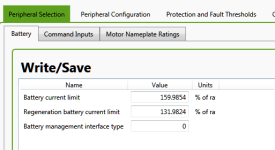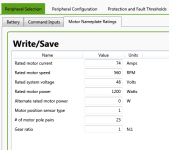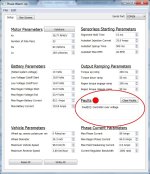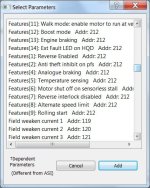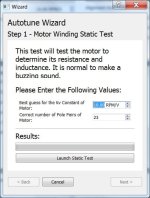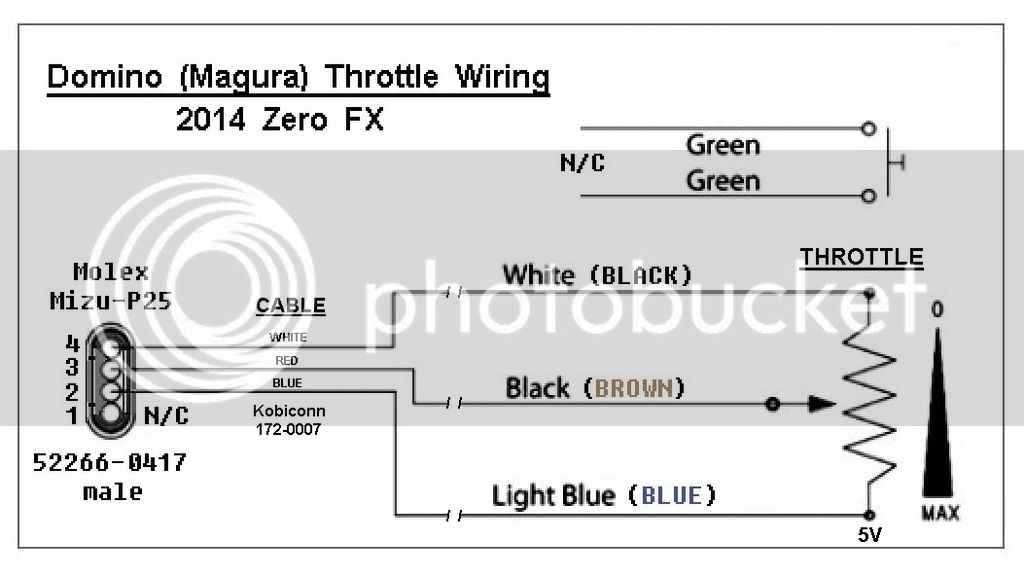mrbill
10 kW
justin_le said:mrbill said:But, I was thinking that iser's problem was related to the resonance Justin and I have observed in drivetrains that are "springy". This would include mid-drives that run motor power through a bike's shift-able rear cluster, or a chain-drive on all but the stiffest of bicycle frames.
Just to be clear, the field oriented controllers work perfectly well with any normal mid-drive bike system like a BBS0X, ecospeed, cyclone kit etc. on a regular diamond frame bike. That's all well within the realm of stiff enough to not see any of this behavior, and it would only be a small fringe if ebike drives that have enough elasticity from the motor to the wheel where you get this instability.
It's easy to understand why a torque control controller has that problem. It would be like towing a trailer that's linked to a truck with a bungee cord, and having as the only feedback for how hard to step on the gas being a force sensor on the trailer hitch, with a goal of keeping that force constant while you drive over different terrain and bumps etc..
I also tested a mid-drive motor of the kind supplied by Ecospeed with the BAC2000 on a bike (Bike 2) whose motor-driven chain drive is roughly 1m from driving spindle to rear cluster (half the length of chain used on Bike 1 that was used for my initial test), but still about 1.5x longer than the BB to rear cluster distance on a typical upright diamond-frame bike. The frame did not visibly flex under high load, but upon shifting the rear cluster, motor power hesitated repeatedly several times before settling down to even delivery. The severity of the resonance was less, but it was still present and too severe for me to want to run it that way long-term.
Recumbent bikes (both long and short wheelbase) with rear-wheel drive, cargo bikes, long-tail bikes, and tandems are likely to have chain-drives longer than those of a regular diamond frame bike. None of these is a good candidate for a torque/current throttle mode controller where motor power is applied through the chain drive.
I hope ASI can be persuaded to add support for a PWM/voltage throttle mode.
mrbill said:Here is a question I posed earlier that seems to have gotten lost:
mrbill wrote:
5) Can Grin or others give any advice/guidance with the setting of parameters under "Advanced Motor" (field weakening), such as when to use, how much, and the trade-offs?
Thanks.
The field weakening was discussed in quite some depth earlier in this thread, see https://endless-sphere.com/forums/viewtopic.php?p=984725#p984725 and related posts on that page.
Thanks for the link. I must have missed this or forgotten I had read it long ago.
Ideally you would never use field weakening, choose your motor winding and battery voltage so that you are happy with your top-end RPM. But if you are constrained to a setup that isn't as fast as you want it to be and can't afford either a faster motor or a higher voltage battery, then you can use automatic field weakening to get a higher top speed from the motor. The more field weakening current you use, the higher your top speed, and the more your efficiency at those speeds plummets since a large portion of your phase current is simply countering the PM fields rather than producing torque.
I'm not sure that there is much more to say than that. Look at your CA to see how a given amount of field weakening current increases your motor RPM and look at your full throttle no-load current draw to see how much extra power is being wasted to allow these higher speeds, and make the trade-off which suits what you want. The graphs that I included in the post linked above show the general relationship quite well.
In short, there is no free lunch. Fortunately, I selected a system voltage and motor winding that yields sufficient level-ground top speed without field weakening.
It might be convenient if a pre-configured amount and quality of field weakening could be switched on/off while in use. That way it could be employed selectively on a moment's notice, like a "turbo" switch.


